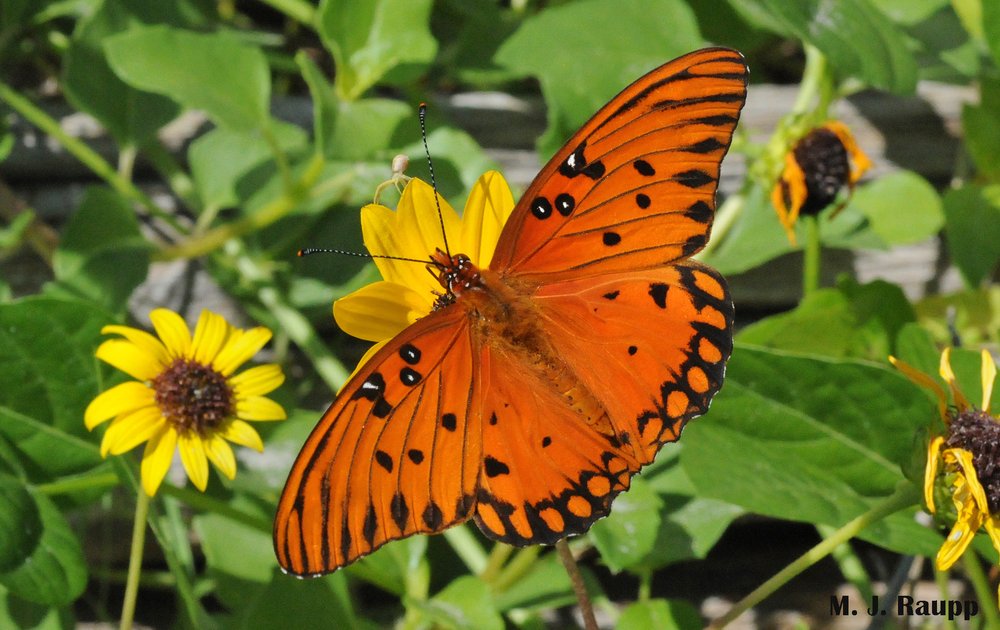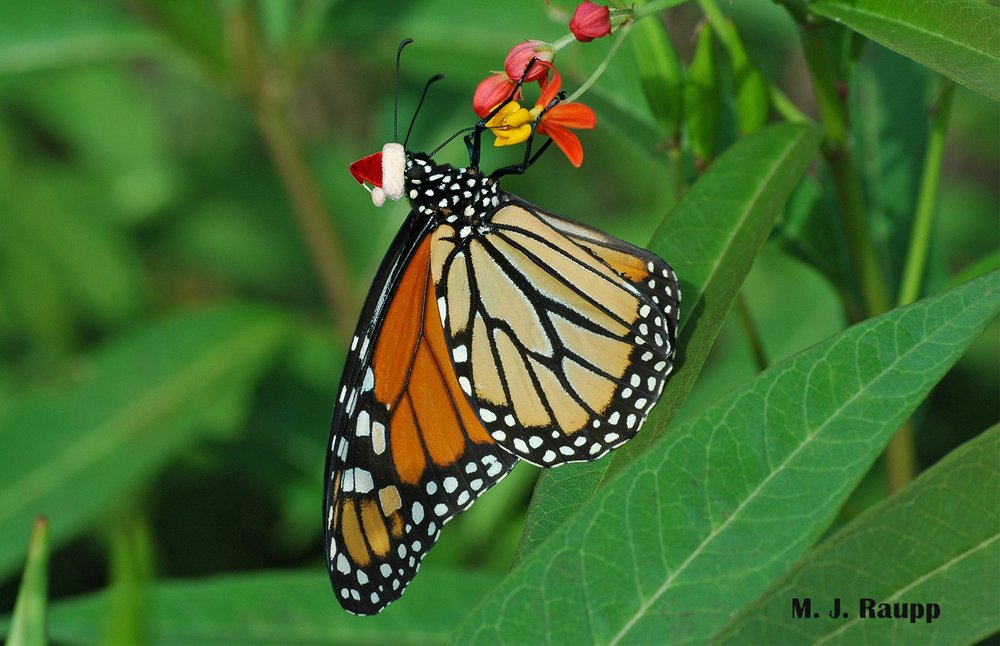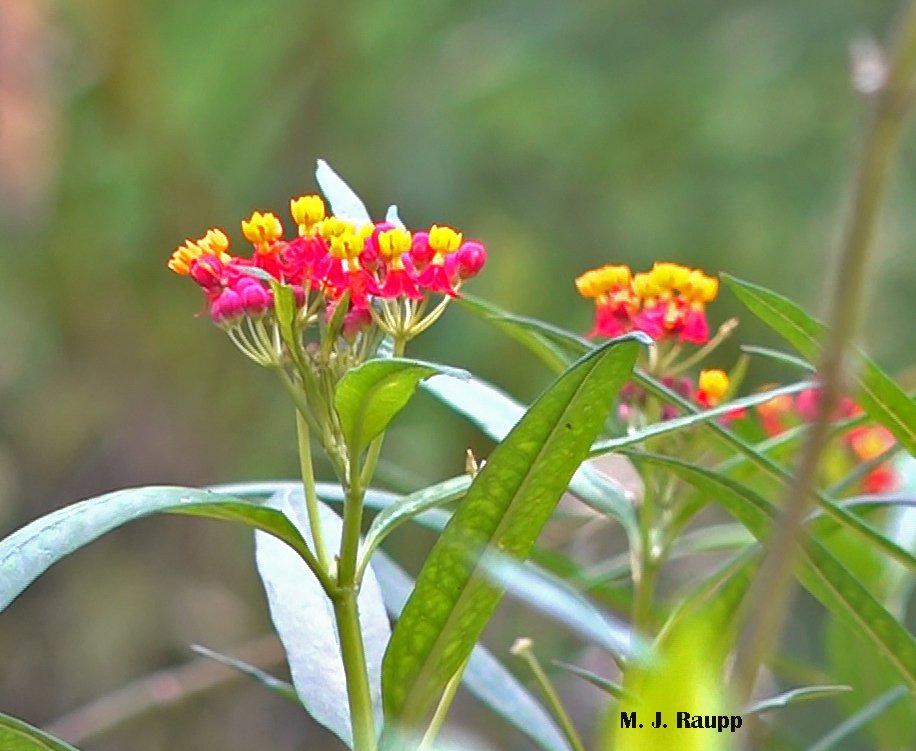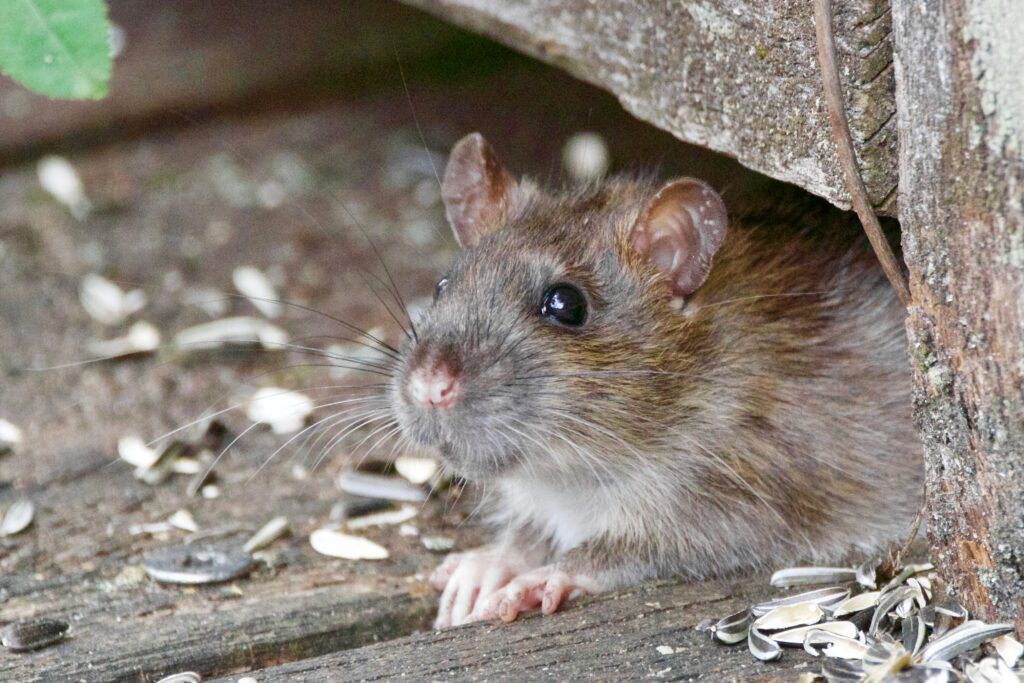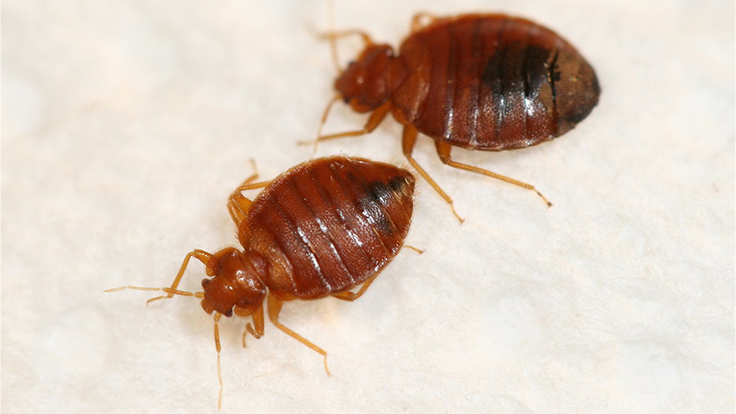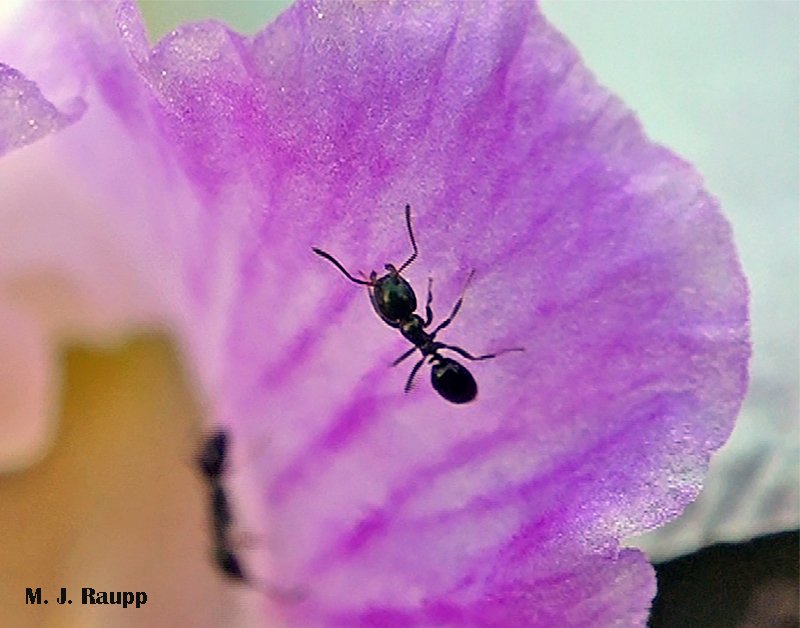Unwelcome guests in Hawai’i: American cockroach, Periplaneta americana, German cockroach, Blattella germanica, and Western yellowjacket, Vespula pensylvanica
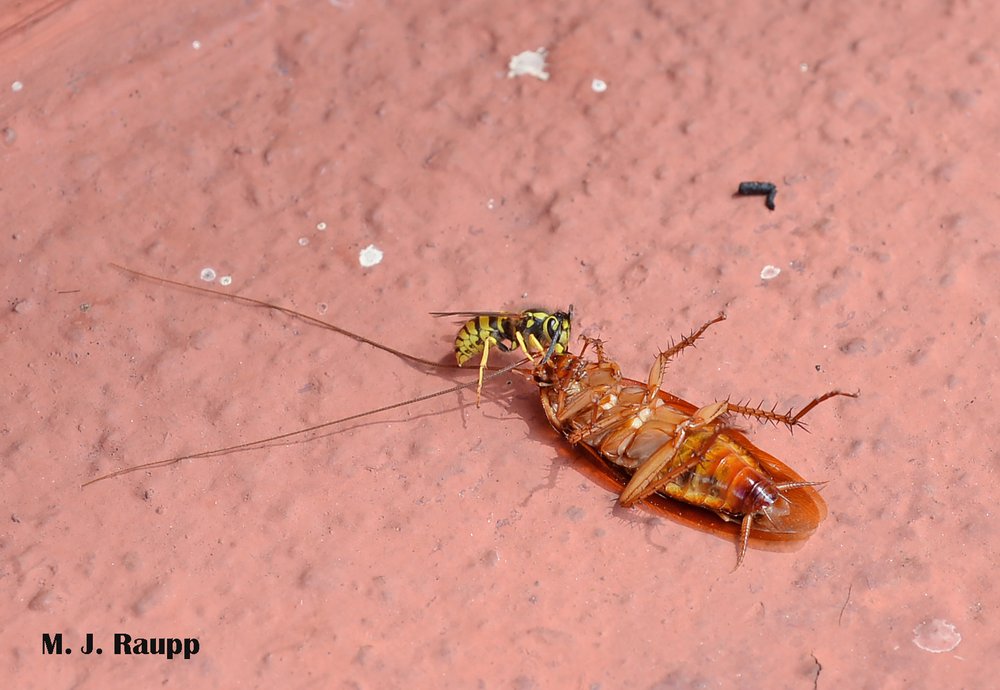
Doing what comes naturally, an invasive yellowjacket is a diner while an invasive cockroach becomes dinner.
In previous episodes we met strange plant-sucking psyllids and opportunistic ants colonizing plants growing on some of the newest real estate on earth. We also met monarch butterflies and Gulf fritillaries, gorgeous aerial voyagers that traveled thousands of miles across the ocean to reach the isolated Hawaiian archipelago. We met some beauties, but this week we meet some of the beasts. Creatures indigenous to the Hawaiian island have been slammed by the accidental or deliberate introduction of animals like rats, mongooses, fire ants, and frogs. While visiting Volcano National Park in autumn of 2022, we bumped into two clans of unwelcome colonists, cockroaches and yellowjackets that made their ways to the Hawaiian Islands in addition to other lands around the globe.
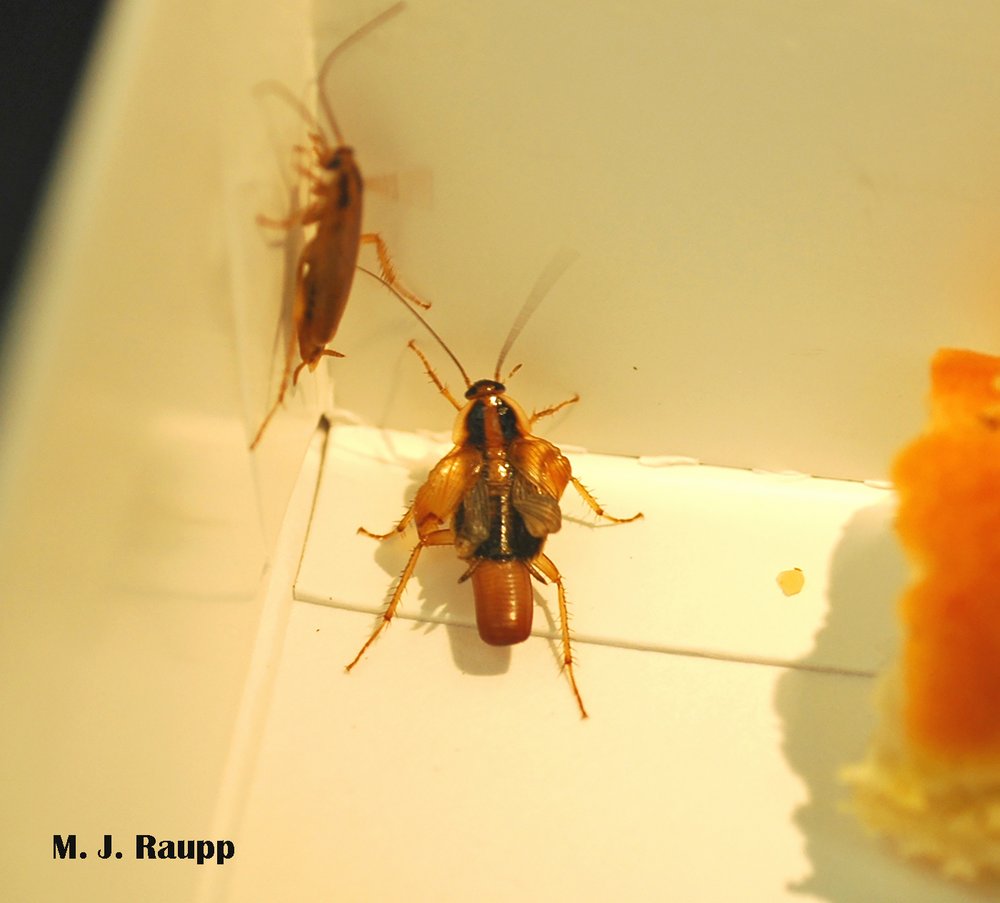
German cockroaches like this female carrying her egg case have colonized the Hawaiian Islands and countries around the world.
German cockroaches and American cockroaches share much in common beyond being something you don’t want to find in your kitchen. First, their distribution is cosmopolitan, meaning that they are found around the world having traveled with humans since antiquity. Second, their common names are misnomers as scholars believe that German roaches likely originated in Asia and American roaches likely spread from their aboriginal home in Africa. Another unwelcome immigrant to the islands is the western yellowjacket from North America. This rascal creates havoc on several islands in the archipelago where it feeds on more than 40 families of arthropods, including many native and introduced insects and spiders, but it also has been documented to dine on vertebrates such as birds. In addition to disrupting ecological communities, western wasps have become an important and dangerous nuisance to residents and visitors to the islands. In 2022 in what has been called one of the worst seasons for yellowjackets, signs posted near observation points overlooking the Kilauea volcano warned visitors to beware of stinging wasps.
Why the concern? Invasive western yellowjackets behave quite differently in Hawai’i compared to their relatives back on the mainland. In their native range in the Pacific North West, yellowjackets form annual colonies, ones that last only one year. Queens spend the winter in protected locations outdoors and initiate new colonies in spring. Their colonies are usually ruled by a single queen and her daughters, the worker wasps that gather food and tend brood in the subterranean nest. The colony grows over the course of the summer but with the approach of winter, and the impending decline of prey to feed developing wasp larvae, brood production switches from producing workers to producing drones (male wasps) and new queens. By the end of the growing season the colony has grown to its final size of a few thousand wasps. With the production of new queens, colony growth ends, and new queens find overwintering sites and await spring, when new colonies are founded. But on the tropical islands of Hawai’i, harsh winters do not punctuate the warm climate of the islands. Bountiful sources of protein and carbohydrates from animals and plants are available all months of the years. Many colonies of western yellowjackets are no longer annual but continue to grow and expand year-round, becoming perennial colonies with not one, but multiple queens. These power houses grow to enormous size. One colony on Maui was estimated to house 600,000 individuals. And with this many hungry mouths to feed, it is not surprising that native and non-native prey items are consumed in huge numbers, upsetting the balance of ecosystems on several islands and forcing tourists to duck and run when workers are on the hunt.
Small German cockroaches like this one are unwelcome visitors in any home, including ones in Hawai’i. Another invasive cockroach, the American cockroach, gets a come-uppance from an invasive yellowjacket. This voracious female predator stung and paralyzed the cockroach. She will dismember it and return with meaty morsels to the nest to feed developing larvae. Yellowjacket colonies can be populated by hundreds of thousands of workers, disrupting local ecosystems and posing health hazards to humans and pets.
But is there any bright side in these otherwise grim and scary invasions? I found some small solace as I watched a ferocious yellowjacket attack, sting, paralyze, and then begin to devour a large American cockroach on a path near a visitor center. Like a scene from Jurassic World Dominion, these travelers -not in time but in space to a land where they don’t belong – do just what Mother Nature intended: eat and be eaten.
Acknowledgements
Two very cool references, “Reproductive plasticity of Vespula pensylvanica (Hymenoptera: Vespidae) on Maui and Hawaii Islands, U.S.A.” by Parker Gambino, and “Life history plasticity magnifies the ecological effects of a social wasp invasion” by Erin E. Wilson, Lynne M. Mullen, and David A. Holway, were used to prepare this episode. We thank Dr. Dan Gruner for stimulating discussions about the ecology of Hawaiian flora and fauna and Dr. Paula Shrewsbury for images used in this episode. To learn more about yellowjackets on the Hawaiian Islands, threats they impose, and how they arrived, please click on this link: https://www.usgs.gov/news/volcano-watch-tis-season-say-goodbye-yellowjacket-wasps
This post appeared first on Bug of the Week
